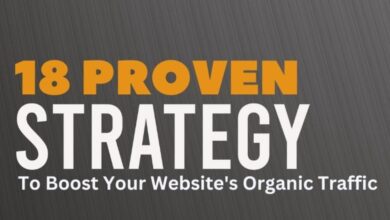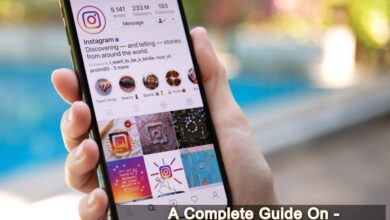Optimize your website for local SEO
SEO can be a fantastic digital marketing channel for almost any business. It helps drive traffic to your website 24 hours, seven days a week. One of the drawbacks, however, can be the amount of time it takes to gain significant results. On average, over 95% of traffic will not go past the first page of Google. Therefore, unless your website is displayed in the top 10 organic listings, your website will struggle to gain many visitors.
However, this is where local SEO can help you gain a foothold sooner rather than later. Although many large businesses dominate highly competitive, national keywords, they will only rank for some cities. Therefore, your main competitors will likely only be other businesses in the area. Use the following tips to help optimize your website and gain more local traffic.
Research Your Local Keywords
The first step is to research your target keywords. For this, you can use Google’s Keyword Planner. Identify keywords relevant to your business, have a reasonable search volume and aren’t overly competitive. Using Google Chrome, open an incognito window and search the keywords you plan to use. Review those who already rank top of page one.
Another option to consider is creating suburbs pages. Suburb pages help to target customers trying to find a service in a specific suburb. Individually, most suburbs will only have a relatively minor search volume. However, by creating a large amount, collectively, they can all add up.
Map Them To Your Website
Once you have validated your keywords, you need to map them to your website. Keyword mapping involves combining all similar keywords into groups. Each group should then be assigned its page. If you find multiple web pages that appear to be competing for the same keywords, you should consider combining them to prevent keyword cannibalisation.
Content Is King
One of the most important on-page SEO ranking factors is its content. That’s because a keyword can also be considered a question. Search engines want to ensure they provide the most relevant and helpful content to answer the question.
Taking the time to ensure you create content that comprehensibly answers a keyword question will help it to perform better. Some factors you should consider are:
- Is the content original? Or has it been copied from other sources and rewritten?
- Does the headline appear shocking to try and get more clicks?
- Is this content you would happily share with friends and family?
- Would you bookmark it in your browser?
Is it well-referenced from high authority sources? - Does the content provide information that is a unique report or guide?
These are the sorts of criteria that Google is looking for and will help you if you consider them part of your content.
Optimize Your Web Pages
The next step is to ensure that your pages are optimized correctly:
The Title Tag is part of a webpage’s metadata and helps give your webpage a title. It’s displayed in the organic search results in larger blue font underlined. You should include the most important keyword at the beginning, which Google gives greater SEO ranking weight to.
The Description Tag is also part of a webpage’s metadata and helps elaborate on the title tag. It is located directly below the title tag in the organic search results in smaller font.
The space for the title tag is around 50-60 characters, while the description tag should be limited to 160 characters.
Heading Tags, also known as H tags, help mark up the page. They range from H1 through to H6, with the H1 tag considered the most crucial heading for the page. The best SEO practice is using only the H1 tag once for every web page. Including keywords naturally within your heading tags can also send relevancy signals to search engines.
Keyword Density refers to how often keywords are located within the content. There isn’t a particular keyword density percentage you should aim for. However, it would be best to seek for the keyword and variations to flow naturally throughout the content.
Content should be written for users, not search engines. If the content you have created comprehensively covers the topic, you will usually cover the focus keywords regardless.
Happy Visitors = More Inquiries
Creating web pages targeting local keyword queries can help improve your website’s online visibility for them. However, ranking for more keywords doesn’t guarantee your business will receive more customer inquiries. That’s because although you may get more visitors to your website. Unless your web pages provide a good user experience, they may leave your website as soon as they arrive.
Google considers many factors as part of its algorithm. However, some less-known factors are a website’s bounce rate and dwell time. The amount of time a user spends on a page, or the frequency of visitors that leave a website without any further interaction, helps Google understand how helpful a page is.
It’s essential to consider the overall design of your website. It should be well-structured and easy to navigate. Images and videos can also help user interaction. How quickly a web page loads is also significant, as a low-performing website can impact a website’s online visibility.
Google Business Profile
A Google Business Profile (formerly Google My Business) is a free tool provided by Google. Every page of Google can be dynamically created. Browser search history and behaviors can influence what Google’s algorithm decides will be the best fit.
However, the local pack, also known as the map pack, will be located directly below the Google Ads section. It generally displays up to three Google Business Profile listings. Its position towards the top of the page, above the organic search results, is prime Google real estate. Therefore, you must take advantage and create a free listing if you haven’t already.
The primary factors Google considers when choosing which profiles to display are Relevance, Prominence and Distance.
Relevant is how much of a correlation there is between the user’s search query and what your business offers. Therefore, you should ensure your profile has been thoroughly completed to include all your services and products.
Distance is calculated by how close your business is to where the user is searching. The search query often includes a suburb; however, Google uses other factors to determine the target area when it has yet to be. They may use a user’s IP address or search history to select it.
Prominence refers to how well-known and popular a business is. Some factors used are the number and quality of links across the web. It may also take into consideration how frequently your profile gains reviews.
Creating Local Citations
Local citation listings are listings created for your business using online business directories. The value of these websites has decreased significantly as search engines have evolved. However, they can still generate a small amount of traffic.
Rather than submitting your company information to every directory website, focusing on quality is better. One of the easiest ways to do this is to search for your keywords, review the results in the first several pages of Google, and check which directory citation websites rank well.
Once you have created a list, it helps to create a separate document to record the login information for each website. If your business information changes in the future, it will be easier to update it on all the listings you previously created.
It’s essential to ensure that your business name, address and contact information are consistent across all the websites. To ensure the likelihood of your listings being indexed by Google, you should create unique content as part of the summary for every submission.
Creating Blog Posts
As part of your local SEO strategy, you should incorporate creating high-quality blog posts. Blog posts can be a fantastic way of helping your website rank for long-tail keywords. Those are keywords with four or more words in them. They are often associated with people seeking information on a particular topic.
They can also be easier to rank because they aren’t usually considered ‘money’ keywords. However, targeting them can help you gain results sooner. It can also help you capture customers at all stages of the buying process.
Using your knowledge and experience can help build brand awareness in the community. Then, when your customers are ready to proceed with their purchase, they will be more likely to reach out to you.
Conclusion
One of the advantages of using a local SEO strategy for your business is that it can help you gain results more quickly. However, it’s essential always to review your web pages and consider making amendments to those that could perform better.





